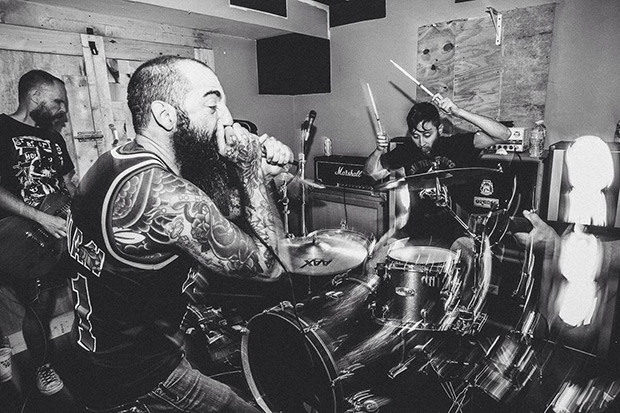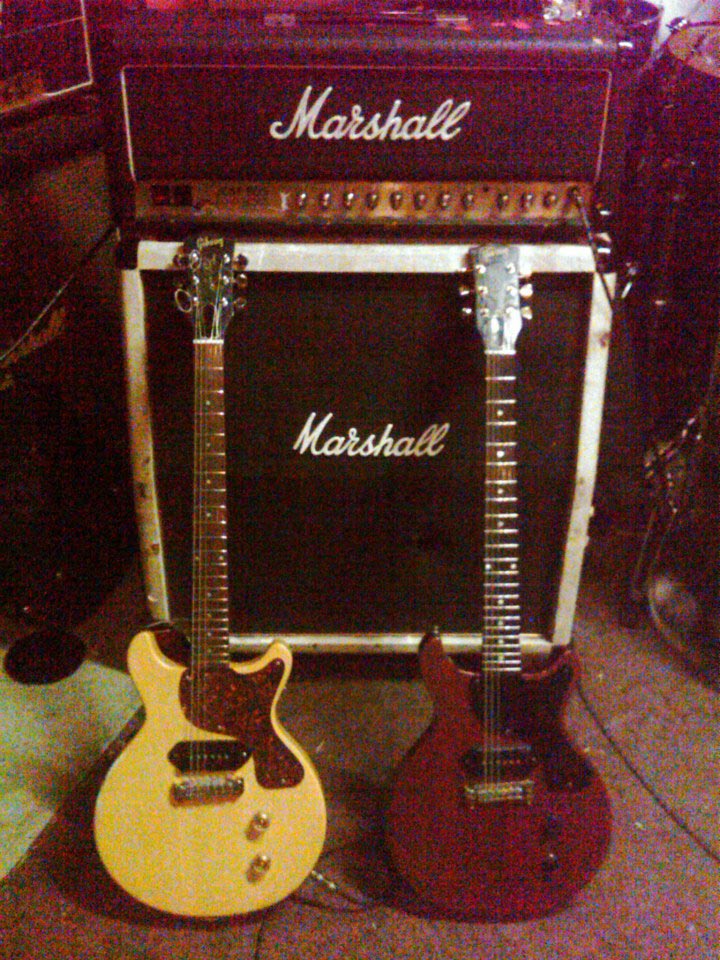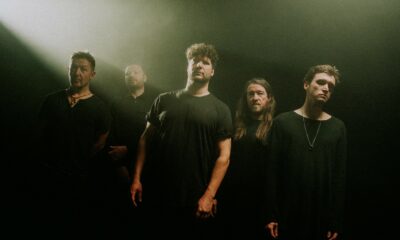Geared Up
Gear Review: Tiger Flowers Guitarist Dean Landry on His 1958 Gibson Les Paul Junior Guitar
Dean Landry, guitarist for the New York-based hardcore/progressive metal band Tiger Flowers, spoke to me about the 1958 Gibson Les Paul Junior guitar that he uses to achieve his unique tone.

Dean Landry, guitarist for the New York-based hardcore/progressive metal band Tiger Flowers, spoke to me about the 1958 Gibson Les Paul Junior guitar that he uses to achieve his unique tone. The band has been gaining the attention of critics and fans alike with their aggressive brand of esoteric, noisy metal-based hardcore as can be found on their 9-song, April 2014 release, Dead Hymns.
What one piece of gear do you use to obtain your signature sound?
Landry: My 1958 Gibson Les Paul Junior guitar. It’s a guitar that I’ve had forever. I bought it used for next to nothing at Manny’s Music on West 48th St. in NYC – one of the many music stores that were there in the old days and it’s also where Jimi Hendrix used to go to buy his guitars. I’ve never seen a guitar that looked so sexy hanging in a store. It was kind of stuffed into the back of the store behind all the expensive guitars because nobody cared about these guitars back then. They weren’t very desirable or collectible. I’m kind of a snob when it comes to the way things are designed and how they look and function and I can’t find anything I don’t like about this guitar.
What about it makes it so important to you?
Landry: I’ve been through a lot with this guitar and it’s really treated me well. Music and playing guitar has saved my life so many times and this Gibson has been there for most of it. This one is very old and worn in so it has a lot of character and I love the way it sounds and feels in my hands. It’s really beat up but I guess that’s to be expected from a 53-year-old guitar that’s been used a lot.

What are the major pros and cons?
Landry: One of the cons would be that it only has one pickup, but that’s also one of the pros. I love that it’s so simple. It’s basically one pickup, and a volume knob. I think of it like a race car that’s been stripped down and just has the necessary parts to do the job. It doesn’t have all the bullshit bells and whistles and fancy electronics and tremolo system, etc. The bridges that came on these weren’t very good so whoever had it before me put a Leo Quan Bridge on it that works pretty well. It allows you to adjust the intonation where the original bridge didn’t.
How long have you had it, how do you use it, would you ever change it?
Landry: I’ve had it for a long long time and no I would never change it. I use it for performing live and for recording. Some people would say that I shouldn’t travel with it because something could happen to it, but it’s a guitar and it was meant to be played; hard. I feel like it would be happier out getting played and making music than home in a box on a shelf.
Any final thoughts or comments on the gear?
Landry: These double cutaway models were only made for three years – 1958, 1959 and 1960. It was basically a student guitar and I guess that’s why they were made so simple. They were made from all mahogany and came in 2 colors – cherry red and TV yellow. The TV yellow version is more collectible than the cherry red version. I’ve read that in the 1950s when there was only black and white TV; white guitars were too bright when people were performing on camera so Gibson came out with the TV yellow color so it wasn’t so bright. It also has a really strange-shaped neck that I’ve never felt on another guitar and I love it. I realize it is a material possession and I probably shouldn’t get too attached to it, but I’m going to play it and have as much fun as I can with it while it’s with me.
Check out the song ‘Dead Hymns’
-

 Music6 days ago
Music6 days agoTake That (w/ Olly Murs) Kick Off Four-Night Leeds Stint with Hit-Laden Spectacular [Photos]
-

 Alternative/Rock15 hours ago
Alternative/Rock15 hours agoThe V13 Fix #011 w/ Microwave, Full Of Hell, Cold Years and more
-

 Alternative/Rock1 week ago
Alternative/Rock1 week agoThe V13 Fix #010 w/ High on Fire, NOFX, My Dying Bride and more
-

 Features6 days ago
Features6 days agoTour Diary: Gen & The Degenerates Party Their Way Across America
-

 Culture1 week ago
Culture1 week agoDan Carter & George Miller Chat Foodinati Live, Heavy Metal Charities and Pre-Gig Meals
-

 Music1 week ago
Music1 week agoReclusive Producer Stumbleine Premieres Beat-Driven New Single “Cinderhaze”
-

 Indie15 hours ago
Indie15 hours agoDeadset Premiere Music Video for Addiction-Inspired “Heavy Eyes” Single
-

 Alternative/Rock1 week ago
Alternative/Rock1 week agoThree Lefts and a Right Premiere Their Guitar-Driven Single “Lovulator”














